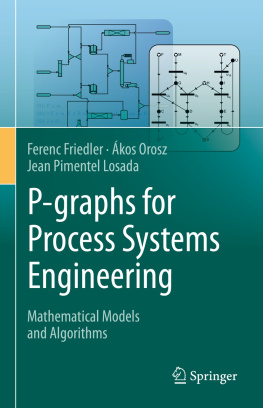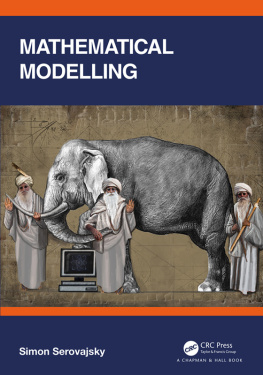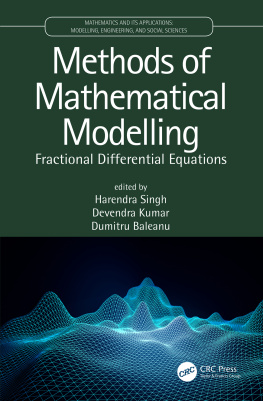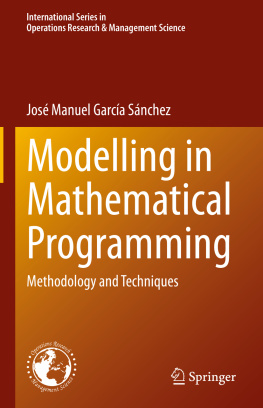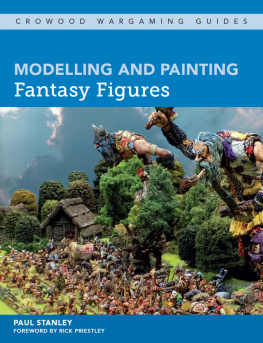Elsevier Ltd.
Series Preface
This series is designed particularly, but not exclusively, for students reading degree programmes based on semester-long modules. Each text will cover the essential core of an area of mathematics and lay the foundation for further study in that area. Some texts may include more material than can be comfortably covered in a single module, the intention there being that the topics to be studied can be selected to meet the needs of the student. Historical contexts, real life situations, and linkages with other areas of mathematics and more advanced topics are included. Traditional worked examples and exercises are augmented by more open-ended exercises and tutorial problems suitable for group work or self-study. Where appropriate, the use of computer packages is encouraged. The first level texts assume only the A-level core curriculum.
Professor. Chris D. Collinson, Johnston Anderson, Dr and Mr Peter Holmes
Preface
John Berry and Ken Houston
I have yet to see any problem, however complicated, which, when looked at in the right way, did not become still more complicated
Paul Anderson
This book is about the use of mathematics to solve problems in the real world. Traditionally the discipline in which the use of mathematics is studied has been called Applied Mathematics, but this term has often been associated with the application of mathematics to science and engineering. Often, in school, Applied Mathematics is associated with Mechanics, but mathematics occurs in many other subjects, for example in economics, biology, linguistics, transport as well as in industry, commerce and government.
Applying mathematics to such a wide range of subjects requires not only good mathematical problem solving skills but the ability of the mathematician to start with a problem in non-mathematical form and to give the results of any mathematical analysis in non-mathematical form. In between these starting points are the important skills of mathematical modelling. The process of mathematical modelling consists of three main stages; we take a problem set in the real world and first formulate it as a mathematical problem; this together with any assumptions made is the mathematical model. The mathematical problem is then solved and finally the solution is translated back into the original context so that the results produced by the model can be interpreted and used to help solve the real problem.
To become skillful at mathematical modelling requires much hard work through experience gained at problem solving. This book will help you to develop mathematical modelling skills by solving problems; it is a doing book not a watching book in the sense that it is important to have a go at some of the problems posed - you will not become a good modeller by watching others.
The aim of this book is to develop your mathematical modelling skills in three different ways:
by solving simple modelling problems;
by developing mathematical models in one application area, population growth;
by reading and giving a critical appraisal of published articles.
introduce two alternative approaches to formulating models; simulation modelling and dimensional analysis modelling.
Study Guide
The book is written to support a first course in mathematical modelling. It is likely that not all the material will be used by every student on such a course. Our experience has shown that it is important in any modelling course to have a range of application areas for students from different backgrounds and interests. On our modelling courses we are often seeing students majoring in the sciences, social sciences, humanities as well as mathematics.
will provide a book for the diverse interest of students following modular type courses.
This book is the result of many years of teaching mathematical modelling to undergraduates and teachers on full-time and part-time courses at the Universities of Plymouth, Ulster and the Open University. Hence there are many colleagues in school, further and higher education with whom discussions over the past fifteen years have helped formulate our thoughts and courses in modelling. We would like to thank them and other people who has influenced the production of this book. Not wishing to upset those whose names we forget we have decided not to name any of these colleagues. But you know who you are! So thanks!!
We are grateful to the following publishers for permission to reproduce material from the following texts:
; Course M371 Block IV Unit 1;
, 18 and 19;
Oxford University Press, Mathematical Modelling, Chapter 7.
We thank Mrs Sharon Ward for turning our handwriting and our poor typing into the excellent CRC for this book. We appreciate her patience and advice in the many changes to the page design and layout. We also thank Michael Broughton for preparing the artwork.
To the reader, we wish good modelling!
What is Mathematical Modelling?
There are three natural questions to ask at the beginning of this book
why study mathematical modelling?
what is a mathematical model?
how do we find mathematical models?
Broadly speaking
mathematical modelling provides a method for solving problems mathematically
a mathematical model is a mathematical representation of the relationship between two or more variables relevant to a given situation or problem
finding mathematical models is a skill that we hope you will develop in this course.
In this first chapter we begin to explore these questions and illustrate the answers through simple problem situations.


